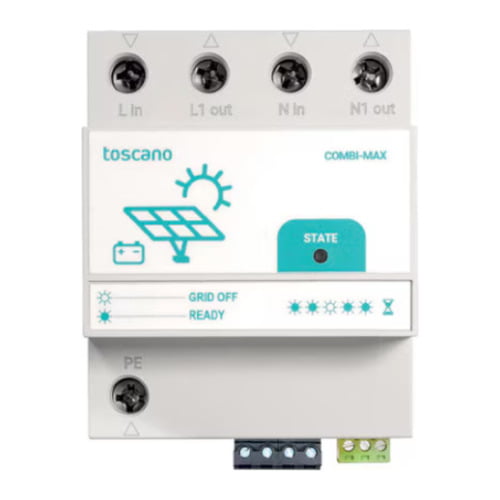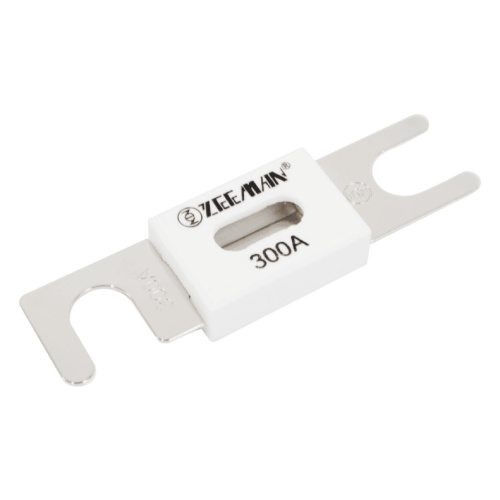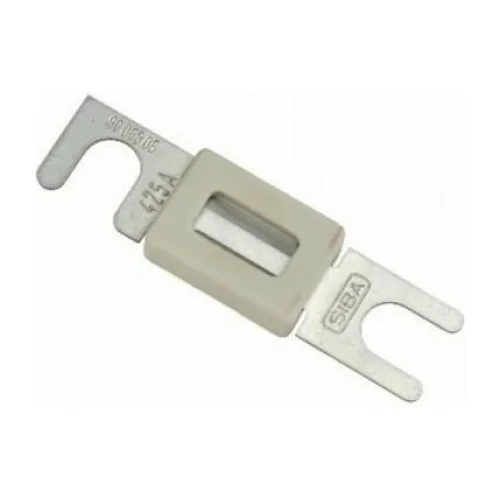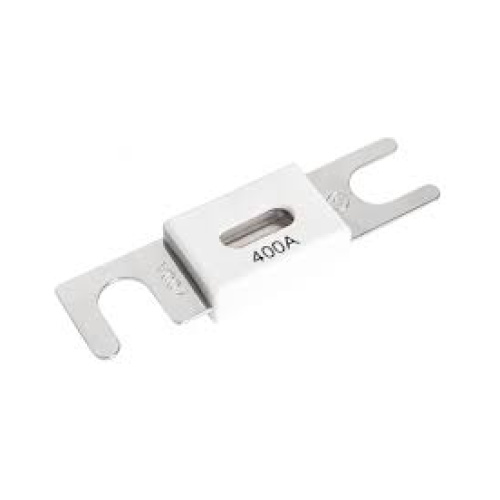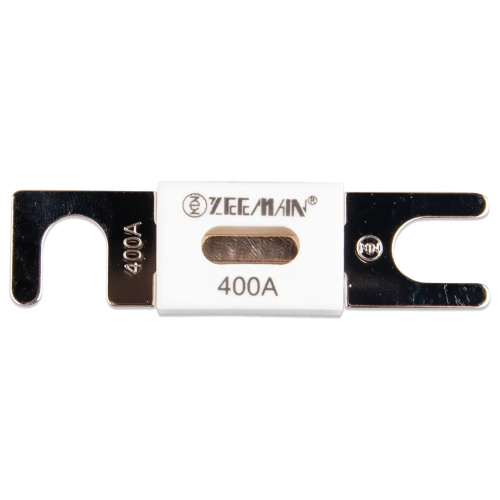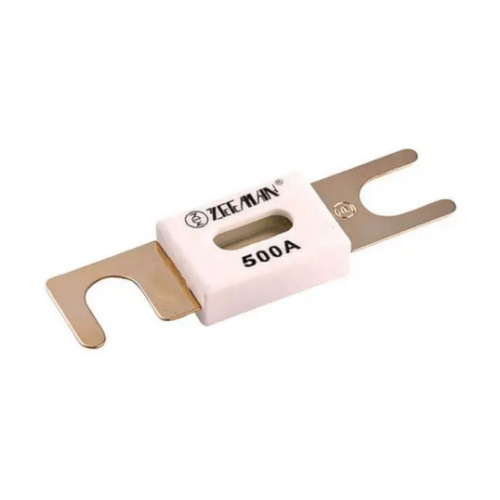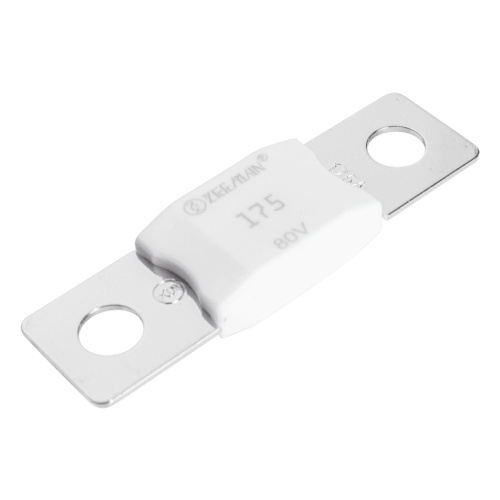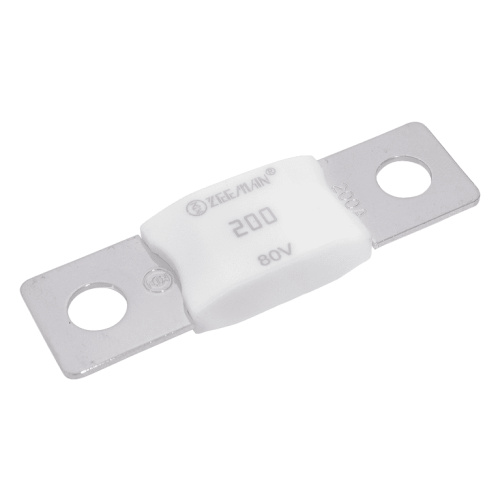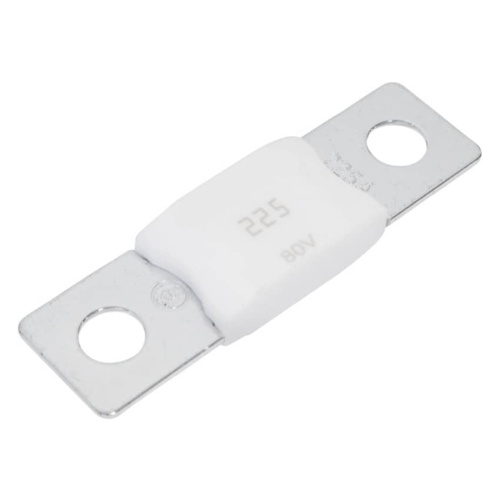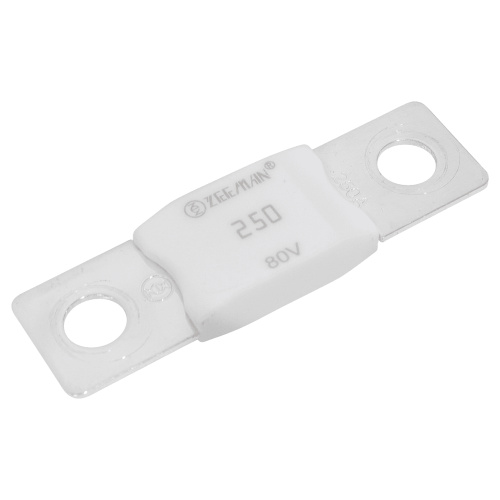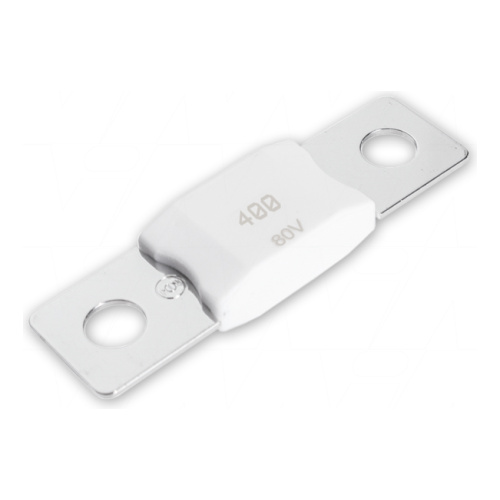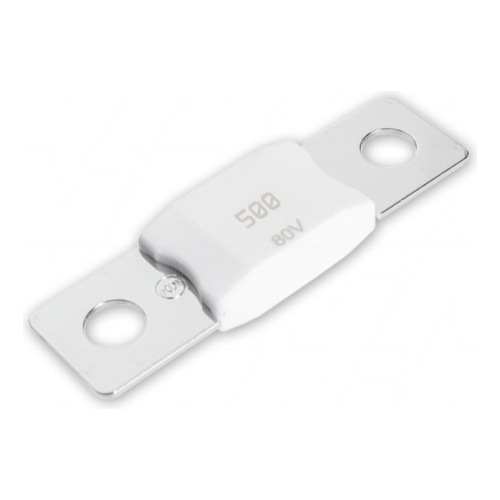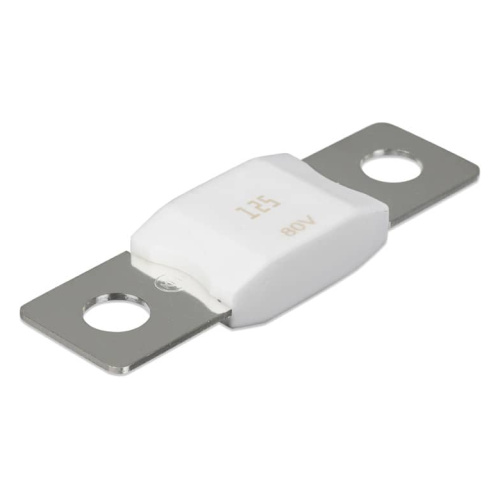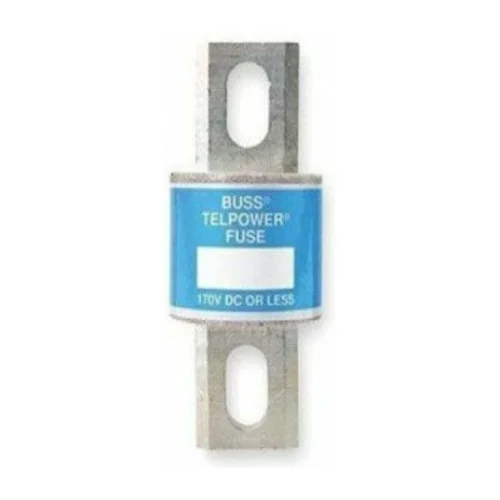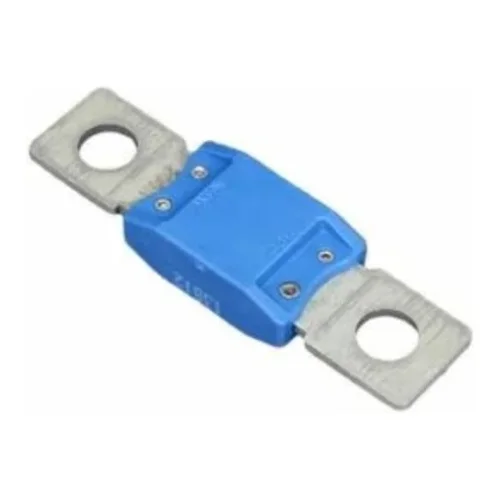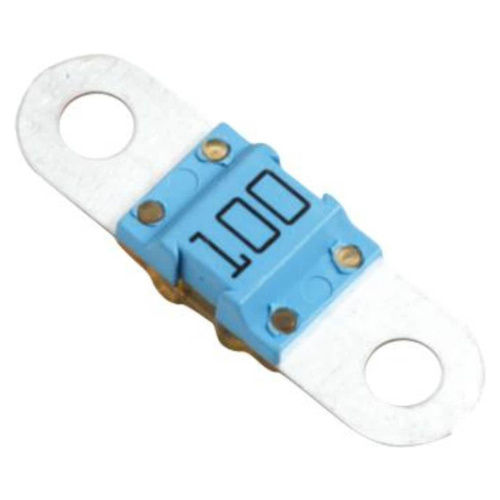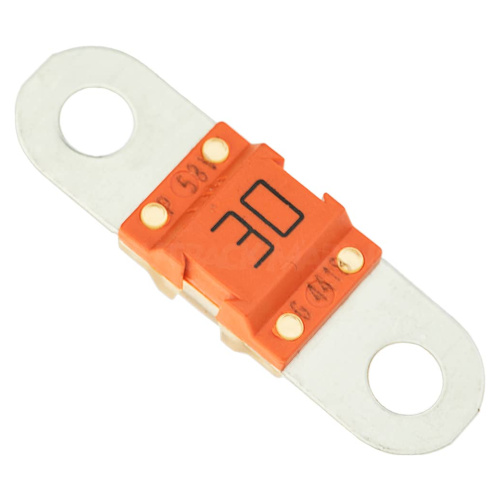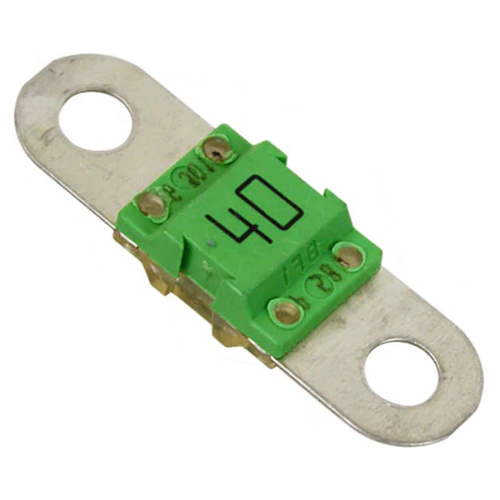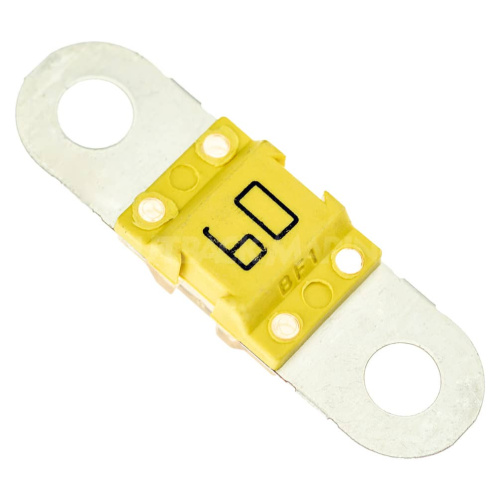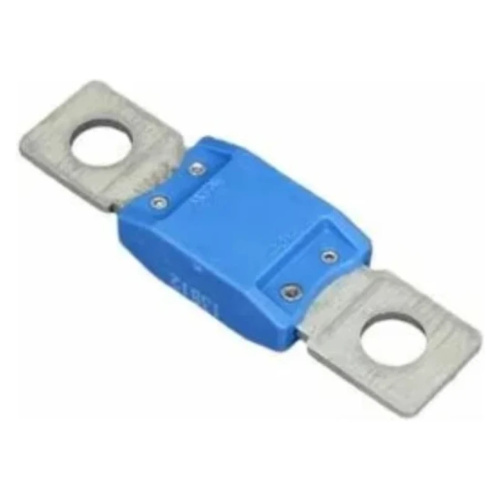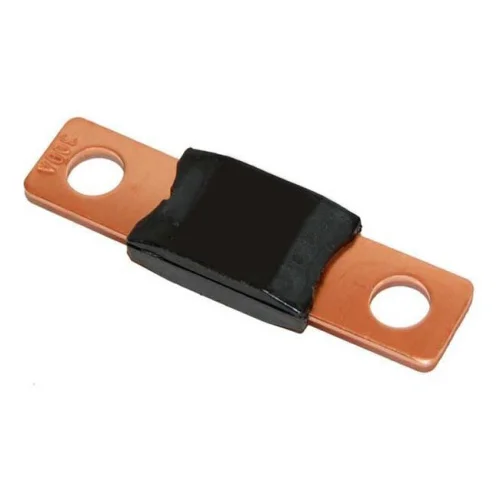- Free shipping to mainland Spain for orders over 300€.
Fuses
The fuses protect electrical installations in the event of overheating. The metal or alloy inside the fuse melts and thus interrupts the flow of electricity. In FVComponentes.com we have mega fuse, midi fuse, anl fuse and cylinder fuse.
Subcategories
"Mega-fuse Victron 200A/58v (5 pcs) - CIP137200010" has been added to your basket. View basket
What is a fuse
The solar fuse is a safety component that serves to prevent damage due to excessive electrical current in an electrical circuit, or for the general protection of electrical or electronic equipment and also for electrical networks. The electronic fuse is mainly composed of a thin conductor that melts at a certain temperature and its design allows it to be easily placed in the electrical circuit.
If the current in the circuit exceeds a certain limit, the conductor of the fuse melts and breaks or opens the electrical circuit. The solar fuse is used by installing it between the power source and the electrical circuit it feeds. In electrical and electronic equipment, fuses work by melting when the circulating electric current exceeds preset values.
Therefore, a solar panel fuse is a device that consists of a holder and a metal filament or foil. The solar panel fuse blows when the current intensity exceeds certain values due to a short circuit or an excessive load. This reaction of the solar panel fuse results in a cut-off of the electrical current and thus prevents overheating of the other connected devices.
The reaction of the electric fuse is determined by the maximum value that can support the rest of the elements of the installation. The solar battery fuse is a protection device for the solar energy installation, reducing the risk of fire or destruction of other elements of the installation. The electrical fuses allow the constant passage of electrical current until the maximum value required by the connected device is reached.
A fuse in a photovoltaic system serves to protect system components such as solar panels, inverters and cables. The solar fuse will be responsible for reducing the risk of fire or other faults that may occur in the system.
Fuses have many applications: automotive, industrial, domestic or in photovoltaic installations. In the photovoltaic sector, fuses for solar panels in an installation are used in the connection of the solar panels, guaranteeing that in the event that the intensity of the fuses themselves exceeds the maximum values admitted for the rest of the elements of the installation, short circuits, fires, overheating or other problems will not occur. Therefore, an electrical fuse facilitates the integrity and safety of the solar energy installation.
Characteristics of a solar fuse
These characteristics of the fuse determine the behaviour in different overload or short-circuit situations. They must be taken into account when choosing the type of fuse according to the specific needs of the system.
- Its breaking capacity. That is, the maximum current that a solar fuse can interrupt.
- Rated voltage. The rated voltage of electrical fuses is very wide, there are fuses on the market between 250 and 600v.
- Fusing current. The fusing and non-fusing current of the solar panel fuse, i.e. at what current the electrical fuse reacts and stops the current flowing.
- Rated current. The current rating of fuses for solar panels is very wide and can currently cover practically all electrical requirements.
- Melting curve. The fuse melting curve reveals the relationship of the solar electric fuse disconnection time and current.
There are a wide variety of solar fuses on the market and they are classified according to their type of material, use, amperage, etc. An electrical fuse consists of several parts that can be easily differentiated. These are the parts of the fuses for solar panels:
- Electrical fuse element: This is the most important element of the fuse which consists of an electrical conductor, usually made of silver or copper. Its function is to interrupt the flow of current by heating up and burning out if the capacity of the fuse is exceeded in the circuit.
- Electrical fuse box, usually made of porcelain: This is the cover that protects the contents of the fuse.
- Electrical fuse status indicator: This indicator is activated when the fuse is blown, so that the user can replace it as soon as possible.
- Electrical fuse extinguishing medium, which is usually made of quartz sand.
Technical aspects of fuses
Rated Current
The electrical current that the electrical fuse must withstand for an indefinite time without blowing or changing its physical characteristics. If the current exceeds its rated value, electrical fuses are likely to blow and the current flow will be interrupted.
Fusion current
This is the value of electric current that causes the electric fuse to blow in a certain time. This current is produced during a temporary overload or short circuit.
Maximum fuse voltage
This is the maximum voltage that an electrical fuse can withstand without suffering damage to its insulation. The thermal fuse consists of a metal part that is placed in series with the electrical system to be protected.
Disruptive capacity
This is the capacity of the thermal fuse to safely interrupt the current in the event of a short circuit. The thermal fuse has a rated breaking capacity which must be equal to or greater than the maximum current of the system.
Response time
The thermal fuse is designed to respond reliably to electrical overloads. The response time indicates how long the current above the rated current can flow before a short circuit occurs.
Voltage
The thermal fuse varies according to its ability to withstand certain voltages. It is important to choose the right thermal fuse with its appropriate voltage for the system application and efficiency to protect the system.
Restart
The thermal fuse can be reset after a short circuit. This type of fuse is recommended because you can reset the current circuit without having to change the thermal fuse.
How to choose a solar panel fuse
All electrical appliances and devices in the home need electrical fuses to protect the electrical circuit that powers them. An electronic fuse is used to protect electrical circuits, and also those that supply power to electrical appliances such as: refrigerators, washing machines, dryers, ovens, air conditioners, televisions, computers, lights,...
Any electrical appliance or electrical device that is connected to the household grid needs to be protected by a PV fuse to avoid electrical overloads and prevent the risk of fire or damage to electrical appliances.
It is important to bear in mind that there are various types of fuses that are suitable for the installation of our home: glass tube fuse, thermal fuse, cartridge fuse. Do not forget that the thermal fuse, solar panel fuse, light meter fuse, etc. must be selected taking into account the parameters set by the manufacturer.
Solar fuse for photovoltaic systems
A photovoltaic installation fuse is a key element to protect the components of these installations. If you are wondering what a fuse is for, it serves to protect the components of an electrical system in the event of overheating.
The fuses required in a solar panel installation:
- Photovoltaic circuit fuses: The solar panel fuse is used to protect the individual circuits in the installation.
- Inverter protection solar panel fuse. These photovoltaic fuses are specially manufactured to withstand high power currents.
- Photovoltaic fuses for solar panel protection. This solar panel fuse protects against overcurrents and short circuits, thus securing the photovoltaic installation.
To choose a fuse for a photovoltaic installation, it is necessary to follow the manufacturer's instructions and select the appropriate solar panel fuse.
The fuses in a solar panel installation should be placed as close as possible to the batteries, between the charger-regulator and the batteries. A fuse should also be placed between the battery and the inverter.
Fuse types
There are several types of fuses: mega fuse, midi fuse, anl fuse, cylindrical fuse,... below we explain the characteristics of some of them.
Cylindrical cartridge solar fuse
This type of solar fuse is shaped like a cylinder, similar to a tube, has a thin wire or metal strip in the middle and metal caps at each end. If the current flowing through the circuit is greater than the preset value, the wire or metal strip heats up and melts, thus interrupting the circuit and preventing possible fires or dangerous overheating.
Cylindrical fuses are used in various electronic and electrical devices to protect them from damage in the event of an overload. There are different types of cylindrical fuses such as: aM class fuses (used to protect motors and transformers) and gG class fuses (used for general power line protection).
Solar fuse type D
This type of electrical fuse type D is a model for low and medium voltage applications. This type of fuse has a cylindrical design and is made of conductive materials such as copper or silver, and has a ceramic housing that protects them from moisture and other contaminants.
The designation "D" refers to the size of the electrical fuse and its breaking capacity. Type D fuses are designed for current ratings up to 125 A and have a minimum breaking capacity of 50 kA.
These electrical fuses are commonly used in power circuit protection applications, for high-power motors and other high-power electrical equipment. When the current flowing through the circuit exceeds the rated level of the solar fuse, an overload occurs and the solar plate fuse blows, interrupting the current flow and protecting the electrical equipment from further damage.
Type D solar electric fuses are also used in applications where they are required to have a high breaking capacity to protect electrical equipment and systems from short circuits and overload faults.
- 25 A size, for solar fuse from 2 to 25 A
- Size 63 A, for solar fuse 35 and 50 A
- 100 A size, for solar fuse 80 and 100 A
Solar fuse type D0
Type D0 are specially designed for low voltage and rated current applications, common in electrical distribution systems. They have a cylinder-shaped design and are made of conductive materials such as copper or silver, with a ceramic housing to protect them from moisture and other contaminants.
The designation "D0" refers to the size of the electrical fuse and its breaking capacity. Type D0 electrical fuses are designed to withstand up to 63 amperes and have a minimum breaking capacity of 6 kiloamperes. These electrical fuses are used in applications to protect lighting circuits, sockets, small motors and other low-power electrical equipment. When the current flowing through the circuit exceeds the set rating of the solar electric fuse, an overload occurs and the solar panel fuse blows, interrupting the flow of current and protecting electrical equipment from further damage.
Blade type solar fuse
The blade type fuse is used in high current and high voltage electrical systems. It has a blade-shaped design, with two flat terminals that connect to a fuse holder and an element in between.
Blade-type electrical fuses are commonly used in applications involving the protection of power distribution circuits, transformers, circuit breakers, motors and other high-power electrical equipment. They are specially designed to withstand current ratings of several hundred amperes and have a minimum breaking capacity of several thousand amperes.
They have a quick disconnect capability, so they fuse quickly and safely when an overload or short circuit occurs in the system, preventing further damage to electrical equipment and protecting users from potential electrical hazards. They are also easy to replace, making repair and maintenance of electrical equipment simpler and more economical.
Fuse paddle (car fuse)
Car fuses or paddle fuses are protection elements used in electrical systems to prevent possible damage and short circuits in vehicles. They are designed to break when they sense a current overload and prevent damage to the car's electrical system. The amperage of the fuse must be correct for the vehicle's circuit, as fuses that do not have the current rating required by the electrical system could cause serious damage.
In cars, a car fuse box can be found in the engine compartment or inside the vehicle. And what is a car fuse box for? To protect the car's lighting system, windscreen wiper, audio or even the remote ignition system. The air conditioning fuse, the windscreen wiper fuse and the central locking fuse are the fuses that need the most replacements.
Steps to replace the fuse:
- Switch off the vehicle completely
- Look for the fuse boxes in the car. Consult the vehicle owner's manual.
- Find the one that is melted and gently remove it.
- Replace the old one with the new one, which should be of the same amperage. There are labels on the car's fuse box for easy identification.
- Start the car and check if the electrical system that was previously faulty is now working properly.
Thermal fuse
A protection element that disconnects an electrical circuit when it detects an anomaly in the temperature of the system. It is designed to detect heat, it fuses when it detects a specific temperature. When activated, the electrical system is stopped, thus avoiding risks such as fire or electrical damage.
The thermal type fuse is used in installations that need protection against overheating. It is common to use this thermal device in household appliances, motors, heating or electronic equipment, in batteries and cells.
There are many types on the market, with a very wide range of temperatures from 70ºC to 250ºC. In the category of the thermal type, we can find different classifications.
To find out if the thermal device is fused, just use a multimeter. This measuring device will tell you whether the thermal device is fused or not.
Fuse price
The price of this element is very varied and depends on several factors such as: the type, the size, the manufacturer and its rated current capacity. They are very reasonably priced, in fact the cheapest fuses are those used in private homes. Fuses range in price from €3 to €30.
What is true is that some types used in large-scale industrial applications can be more expensive. This is because they are designed to withstand higher currents, e.g. direct current types. Prices will vary depending on the application.
Fuse electrical regulations
These protection elements are often used in electronic circuits to cut off the current in case of overload or short circuit. The applicable legal regulations vary depending on the country of origin.
In Spain, the Low Voltage Electrotechnical Regulation (REBT) applies, which dictates the rules to be followed in low voltage electrical installations; this document is continuously updated.
The regulation specifies the current rating, voltage and current interruption that these devices must have. Each fuse must be labelled with information such as maximum voltage or the manufacturer.
The REBT also establishes the requirements for the location, safety and conditions that must be met when installing these elements. Another of the aspects specified in the regulations is the classification of these low-voltage devices, as they are not all for the same purpose.
Finally, it also specifies the tests and certificates they must have: interrupting capacity, functional tests, etc. It is important to note that the REBT is constantly being updated, so we recommend that you always read the most up-to-date version of the manual.
Maintenance
Regular maintenance is essential to ensure the efficient and safe operation of any type of PV system. A damaged or defective component can compromise the safety of the entire electrical system, which can lead to serious failures or even fires.
Here are some of the tasks that are recommended for proper maintenance:
- Regular visual inspection: Check this device and identify possible signs of wear or damage. There may be burnt filaments or cracked casings, which may require replacement.
- Cleaning: Keep the device free of dust or encrusted dirt, as this affects its operation.
- Check connections: Make sure connections are tight and free of corrosion.
When to replace a fuse
Here is the list of things to look out for in the regular visual check to see if a replacement is needed:
- If the filament is burnt or broken, this is an indication that it no longer fulfils its function and will have to be replaced.
- If you notice excessive heating, there is probably a problem with the connection or the system.
- When the component activates or deteriorates regularly, it could be due to an overload in the electrical installation. In this case, it is advisable to check it and evaluate the need to replace the components.
These maintenance tasks need to be carried out to know when these devices need to be replaced, allowing for efficient safety of any electrical system and potentially avoiding a serious problem.


